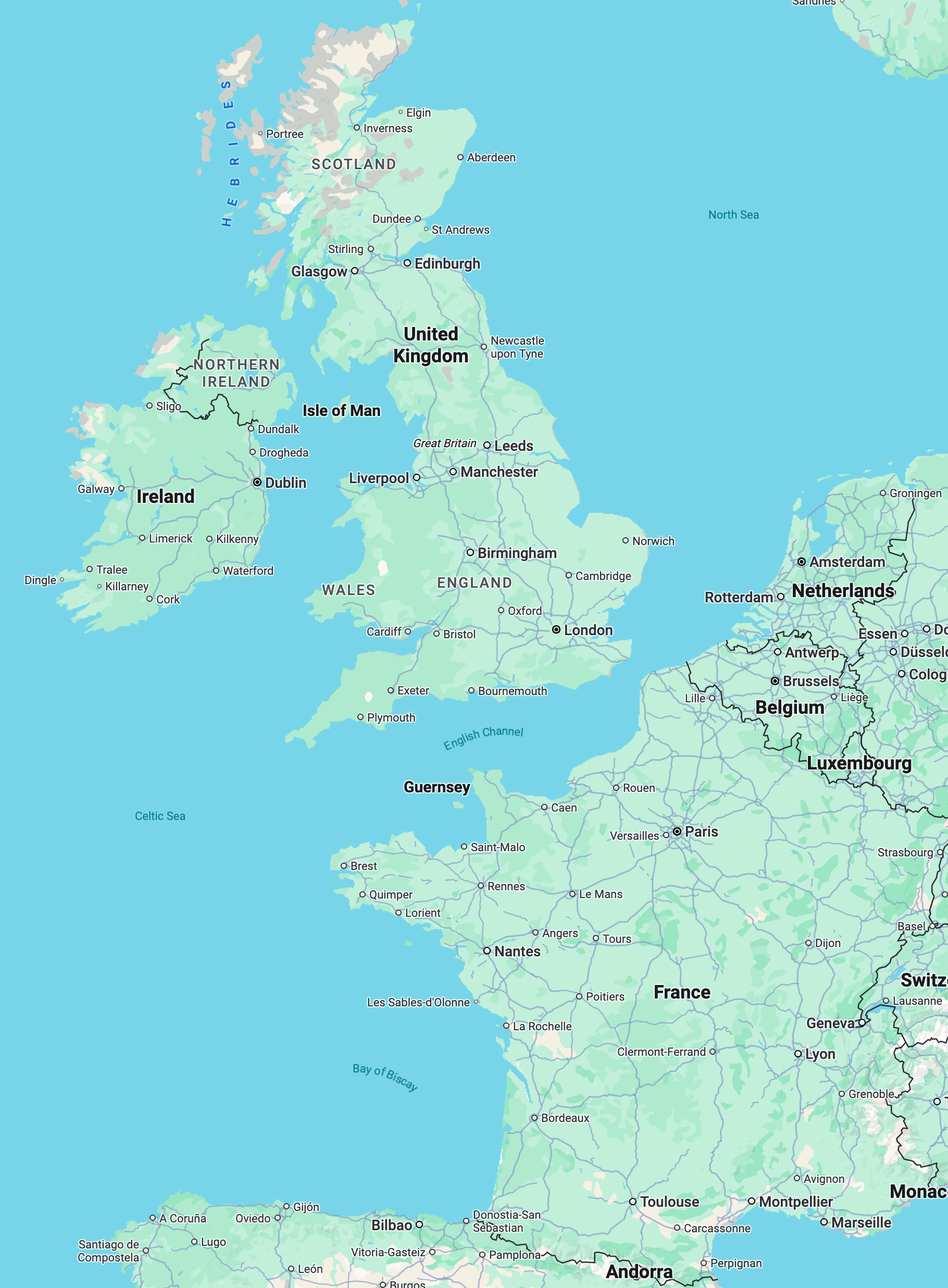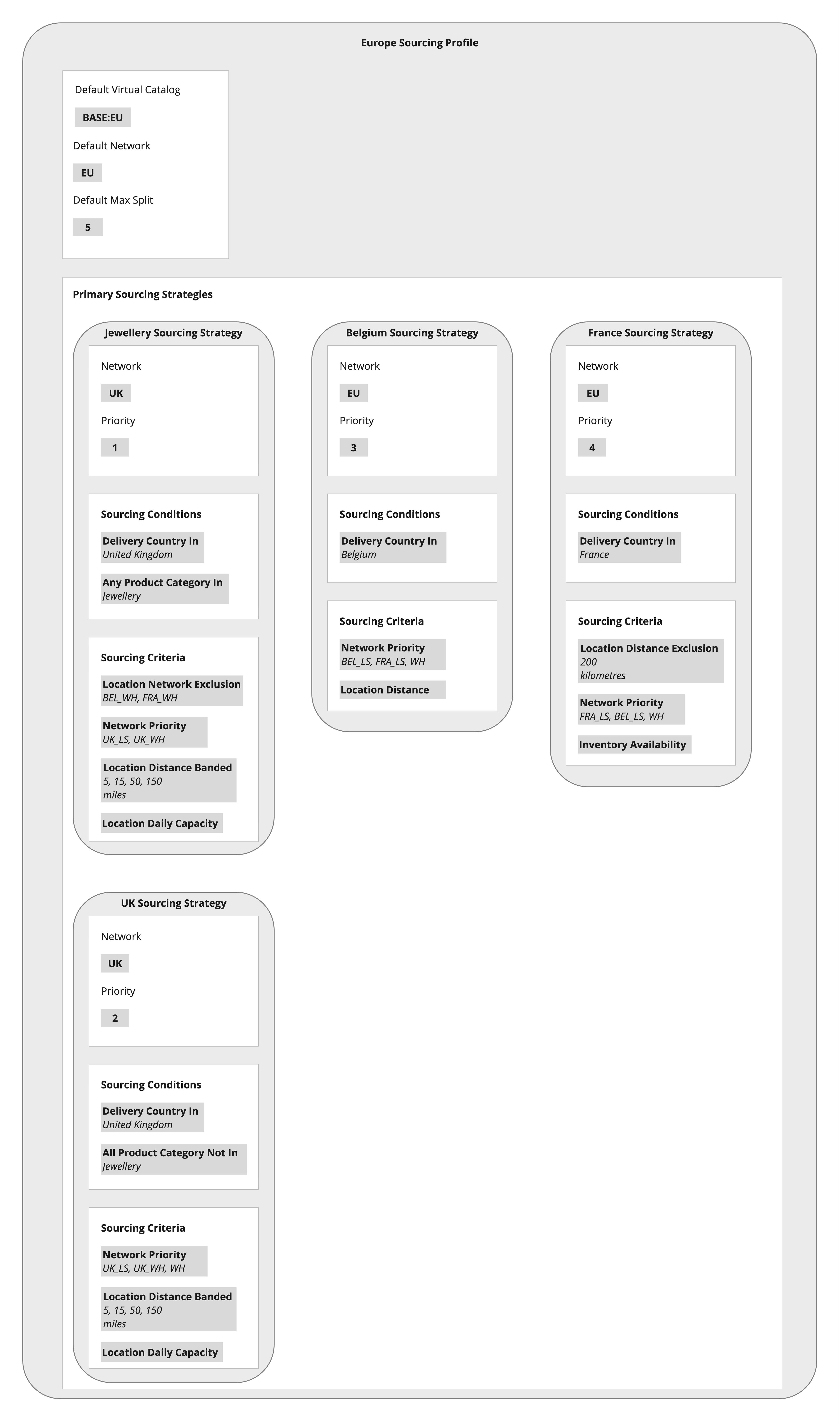Author:
Kirill Gaiduk
Changed on:
13 Oct 2025
European fulfillment spans multiple countries with distinct regulations, market dynamics, and logistical considerations. To ensure efficient, compliant, and cost-effective order fulfillment, the sourcing system must account for country-specific restrictions, operational priorities, and geographic constraints.
Key constraints to address include:
Without country-aware sourcing logic, businesses risk violating regulations, incurring excessive cross-border shipping costs, and introducing unnecessary delivery delays. Implementing country-specific rules ensures compliance, reduces transportation expenses, and improves fulfillment speed and reliability.
Example

A retailer operates in United Kingdom, Belgium, and France, with each country’s local stores and warehouses grouped into their respective networks:
`UK_LS` and `UK_WH` for United Kingdom`BEL_LS` and `BEL_WH` for Belgium`FRA_LS` and `FRA_WH` for FranceGeneral
United Kingdom
`UK_LS`, `UK_WH`) to comply with import restrictionsBelgium
`BEL_LS`) first, then from France (`FRA_LS`) if neededFrance
`FRA_LS`), then source from Belgium (`BEL_LS`) if domestic stock is insufficient